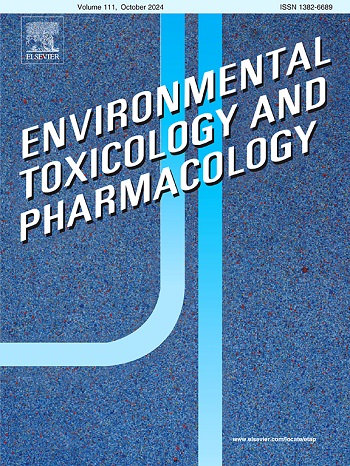百草枯诱导应激后蜜蜂氧化应激标志物的时间动力学模型
IF 4.2
3区 环境科学与生态学
Q2 ENVIRONMENTAL SCIENCES
引用次数: 0
摘要
许多农用化学品破坏了氧化还原稳态,但蜜蜂(Apis mellifera)氧化应激反应的动力学仍然不够清楚。本研究建立了一个控制模型,在注射百草枯后一段时间内监测ros相关标志物,使用贝叶斯建模来表征随时间变化的特征。我们观察到氢过氧化物的短暂上升和脂肪动力学激素(AKH)水平的早期波动,在8 小时内下降并稳定。两组间二次脂质过氧化产物(TBARS)无显著差异。虽然注射不代表自然暴露途径,但它可以精确给药和定时,避免口服摄入的变化。这个实验设计提供了一个易于处理的系统来研究氧化应激机制在规定的条件下。我们的研究结果强调了时间分辨分析在氧化还原生理学中的重要性,并为补充蜜蜂和其他有益昆虫的现场相关毒理学研究提供了一个机制框架。本文章由计算机程序翻译,如有差异,请以英文原文为准。
Time dynamics models for oxidative stress markers in honey bees (Apis mellifera) following paraquat-induced stress
Many agrochemicals disrupt redox homeostasis, yet the dynamics of oxidative stress responses in honey bees (Apis mellifera) remain insufficiently understood. This study established a controlled model to monitor ROS-related markers over time following paraquat injection, using Bayesian modeling to characterize time-dependent changes. We observed a transient rise in hydroperoxides and early fluctuation in adipokinetic hormone (AKH) levels, which declined and stabilized within 8 hours. No significant differences were detected in secondary lipid peroxidation products (TBARS) among treatments. While injection does not represent natural exposure pathways, it enables precise dosing and timing, avoiding variability from oral intake. This experimental design provides a tractable system to investigate oxidative stress mechanisms under defined conditions. Our findings underscore the importance of time-resolved analysis in redox physiology and offer a mechanistic framework to complement field-relevant toxicological studies in bees and other beneficial insects.
求助全文
通过发布文献求助,成功后即可免费获取论文全文。
去求助
来源期刊
CiteScore
7.00
自引率
4.70%
发文量
185
审稿时长
34 days
期刊介绍:
Environmental Toxicology and Pharmacology publishes the results of studies concerning toxic and pharmacological effects of (human and veterinary) drugs and of environmental contaminants in animals and man.
Areas of special interest are: molecular mechanisms of toxicity, biotransformation and toxicokinetics (including toxicokinetic modelling), molecular, biochemical and physiological mechanisms explaining differences in sensitivity between species and individuals, the characterisation of pathophysiological models and mechanisms involved in the development of effects and the identification of biological markers that can be used to study exposure and effects in man and animals.
In addition to full length papers, short communications, full-length reviews and mini-reviews, Environmental Toxicology and Pharmacology will publish in depth assessments of special problem areas. The latter publications may exceed the length of a full length paper three to fourfold. A basic requirement is that the assessments are made under the auspices of international groups of leading experts in the fields concerned. The information examined may either consist of data that were already published, or of new data that were obtained within the framework of collaborative research programmes. Provision is also made for the acceptance of minireviews on (classes of) compounds, toxicities or mechanisms, debating recent advances in rapidly developing fields that fall within the scope of the journal.

 求助内容:
求助内容: 应助结果提醒方式:
应助结果提醒方式:


